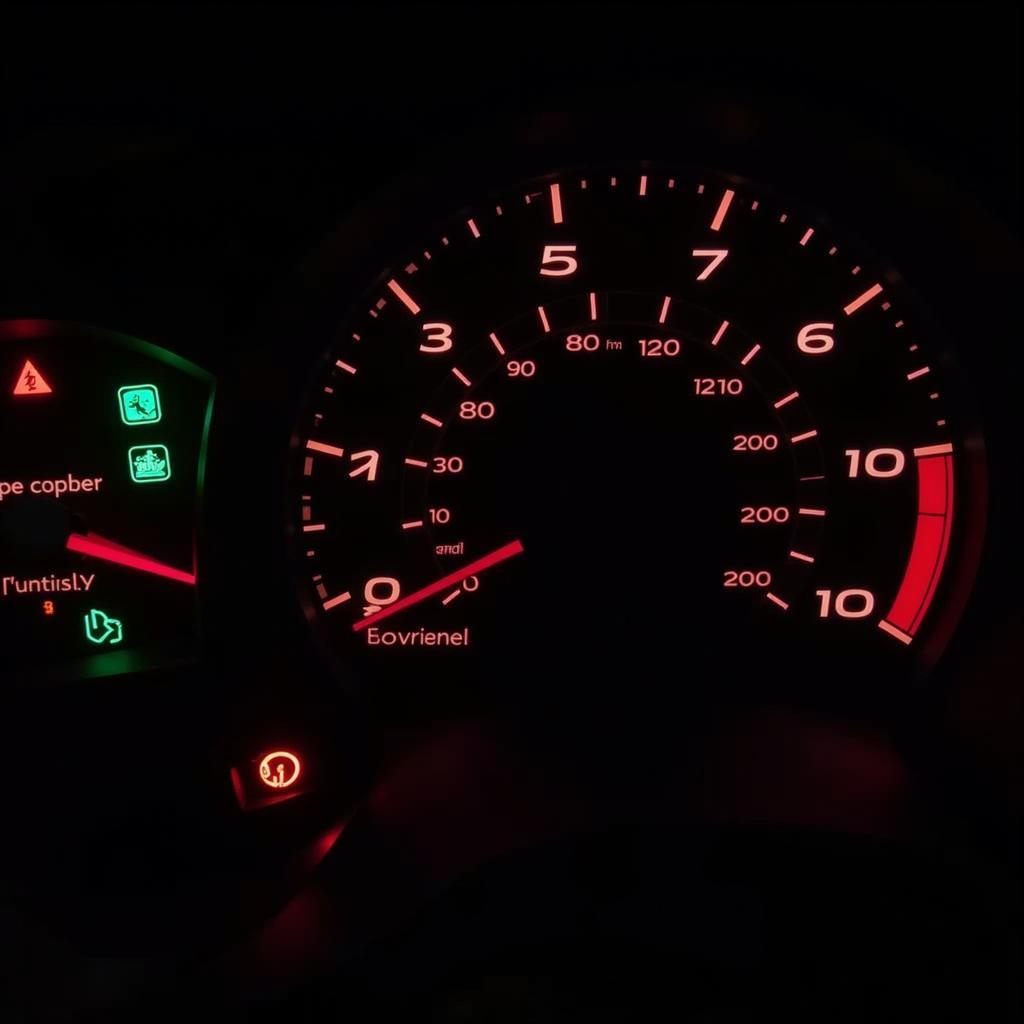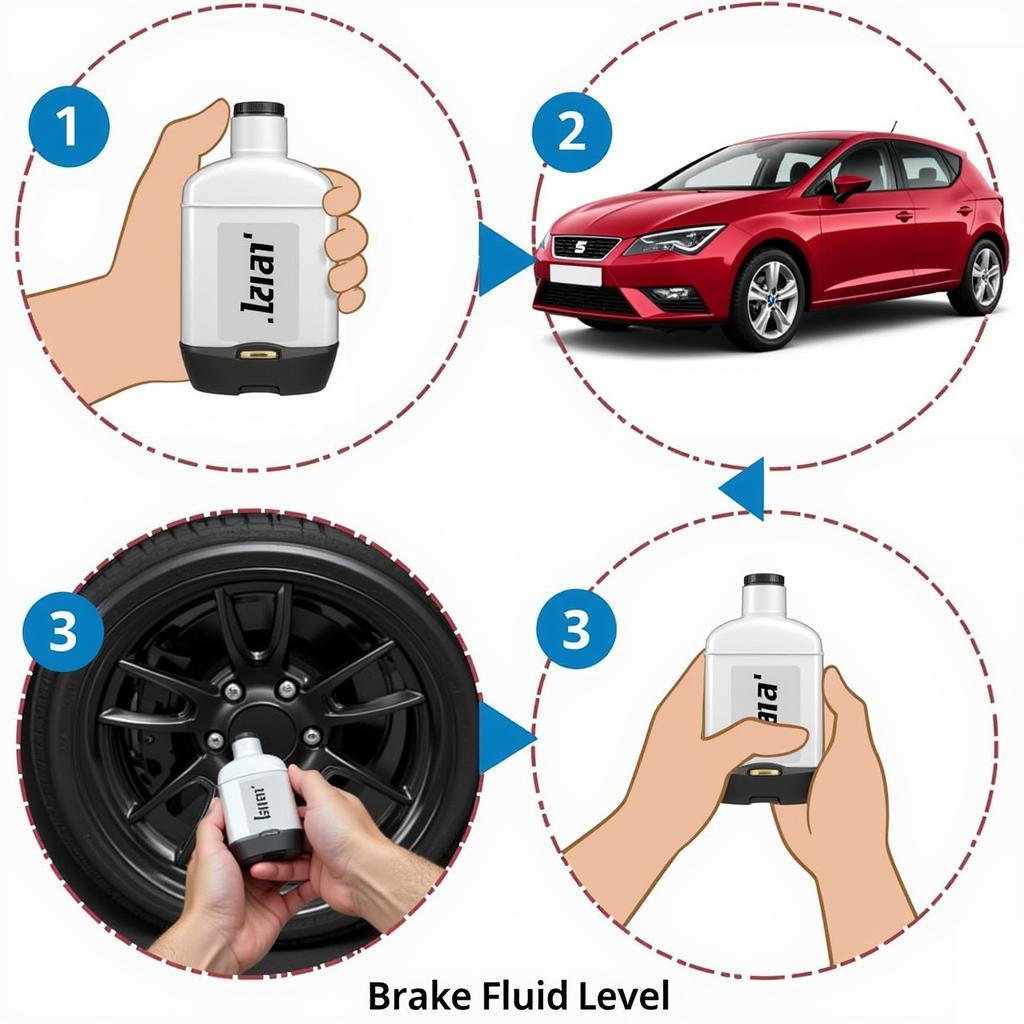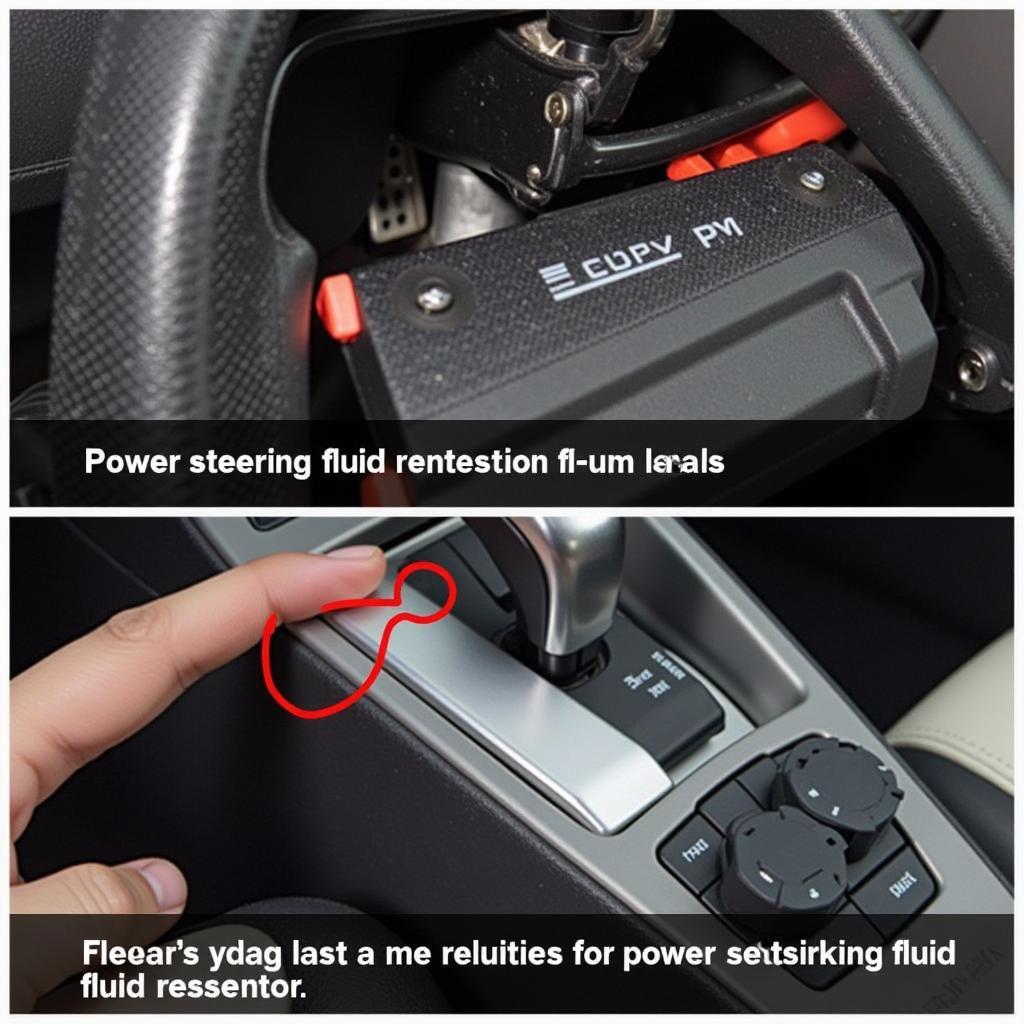The Seat Leon MK2 is a popular and reliable vehicle, but like any car, it can occasionally display warning lights on the dashboard. These lights are designed to alert you to potential issues with your vehicle, ranging from minor inconveniences to serious mechanical problems. Understanding what these warning lights mean and how to address them can help you keep your Seat Leon MK2 running smoothly and safely.
This comprehensive guide will walk you through the most common Seat Leon MK2 warning lights, explaining their significance and offering troubleshooting tips. Whether you’re an experienced DIY mechanic or a car novice, this article will equip you with the knowledge to diagnose and potentially fix the issue.
Decoding Your Seat Leon MK2’s Dashboard
The dashboard of your Seat Leon MK2 houses a variety of warning lights, each with a unique symbol and color that corresponds to a specific system or component.
Color Coding:
- Red: Indicates a serious problem that requires immediate attention. Ignoring red warning lights can lead to costly repairs or even dangerous driving conditions.
- Yellow/Orange: Signals a potential issue or the need for service. While not as urgent as red lights, they should be addressed promptly to prevent further damage or safety hazards.
- Green/Blue: Indicates that a system is active or functioning normally.
 Seat Leon MK2 Warning Lights Dashboard
Seat Leon MK2 Warning Lights Dashboard
Common Seat Leon MK2 Warning Lights and Their Meanings
Here’s a breakdown of some of the most frequent warning lights you might encounter in your Seat Leon MK2:
1. Engine Warning Light (Yellow)
- What it means: This light, often resembling an engine block, illuminates when the engine control unit (ECU) detects a problem with the engine management system. This could be anything from a faulty sensor to a more serious issue like a misfire.
- Troubleshooting tips:
- Check your gas cap to ensure it’s securely fastened.
- If the light is flashing, avoid driving and seek immediate mechanical assistance.
- For a steady light, schedule an appointment with a mechanic to diagnose the problem using a diagnostic tool.
2. Brake Warning Light (Red)
- What it means: This light indicates a problem with the braking system. It could mean low brake fluid, worn brake pads, or a malfunction with the ABS (Anti-lock Braking System).
- Troubleshooting tips:
- Check your brake fluid level immediately.
- If the fluid level is low, there might be a leak. Seek professional help.
- Avoid driving if the light remains on or if you experience any braking difficulties.
 Checking Brake Fluid in Seat Leon MK2
Checking Brake Fluid in Seat Leon MK2
3. ABS Warning Light (Yellow)
- What it means: This light, often displaying the letters “ABS,” signals a problem with the Anti-lock Braking System. While your regular brakes may still function, the ABS, which prevents wheel lockup during hard braking, might be deactivated.
- Troubleshooting tips:
- Have your ABS system diagnosed by a qualified mechanic.
4. Airbag Warning Light (Red)
- What it means: This light, usually depicting a person seated with an airbag deployed, indicates an issue with the airbag system. This could be a faulty sensor, a wiring problem, or a problem with the airbag module itself.
- Troubleshooting tips:
- Do not attempt to fix this yourself.
- Airbag systems are complex and require specialized knowledge to repair. Seek immediate professional assistance.
5. Battery Warning Light (Red)
- What it means: This light, often shaped like a car battery, means the battery is not charging properly. This could be due to a failing alternator, a loose battery connection, or a problem with the charging system.
- Troubleshooting tips:
- Check your battery terminals for any looseness or corrosion.
- If the light stays on, it’s best to have your charging system inspected by a mechanic.
6. Tire Pressure Monitoring System (TPMS) Warning Light (Yellow)
- What it means: This light, resembling a tire cross-section with an exclamation mark, indicates low tire pressure in one or more tires.
- Troubleshooting tips:
- Check the tire pressure of all tires (including the spare) and inflate to the recommended PSI found in your owner’s manual or on the driver’s side doorjamb.
7. Power Steering Warning Light (Red or Yellow)
- What it means: This light, often depicting a steering wheel with an exclamation mark, indicates a problem with your power steering system. This could be due to low power steering fluid, a failing power steering pump, or a problem with the electronic steering system.
- Troubleshooting tips:
- Check your power steering fluid level.
- If the fluid is low or you hear unusual noises when turning the steering wheel, seek professional help.
 Inspecting Power Steering Fluid in Seat Leon MK2
Inspecting Power Steering Fluid in Seat Leon MK2
Don’t Ignore Warning Lights – Seek Professional Help
While this guide provides a starting point for understanding your Seat Leon MK2’s warning lights, it’s crucial to remember that this is not an exhaustive list, and these troubleshooting tips are not a substitute for professional diagnosis and repair.
Modern vehicles like the Seat Leon MK2 are complex machines. If you encounter any warning lights, especially red ones, it’s essential to err on the side of caution.
CarDiagTech: Your Remote Diagnostic Partner
For expert assistance with your Seat Leon MK2’s warning lights, consider CarDiagTech. We offer remote diagnostic services, programming, and software installations to help you get to the bottom of your car troubles.
Our team of skilled technicians can:
- Diagnose the root cause of your warning lights using advanced diagnostic tools.
- Provide clear and concise explanations of the issue.
- Offer effective solutions and repair recommendations.
seat leon mk2 dash warning lights can be confusing, but you don’t have to face them alone. Contact CARDIAGTECH today and let us help you get back on the road safely.
Frequently Asked Questions about Seat Leon MK2 Warning Lights
1. Can I keep driving if the engine warning light is on?
It depends. If the light is flashing, it indicates a severe problem, and you should stop driving immediately to avoid potential engine damage. If the light is steady, you may be able to drive for a short distance, but it’s crucial to get the issue diagnosed and repaired as soon as possible.
2. What should I do if the brake warning light comes on?
Stop driving as soon as it is safe to do so and check your brake fluid level. If the fluid is low or you notice any braking problems, do not attempt to drive and seek immediate professional assistance.
3. Is it safe to drive with the ABS light on?
While your regular brakes may still function, the ABS will likely be deactivated, which can be dangerous in emergency braking situations. It’s best to get the issue addressed by a mechanic promptly.
4. Can I reset the warning lights myself?
While you can temporarily reset some warning lights, this won’t fix the underlying problem. It’s essential to have the issue diagnosed and repaired properly to prevent further damage or safety hazards.
5. How often should I check my car’s fluid levels?
It’s good practice to check your car’s fluid levels (engine oil, coolant, brake fluid, power steering fluid) at least once a month or before any long journeys.
Remember, addressing warning lights promptly can save you time, money, and potential safety risks on the road.
